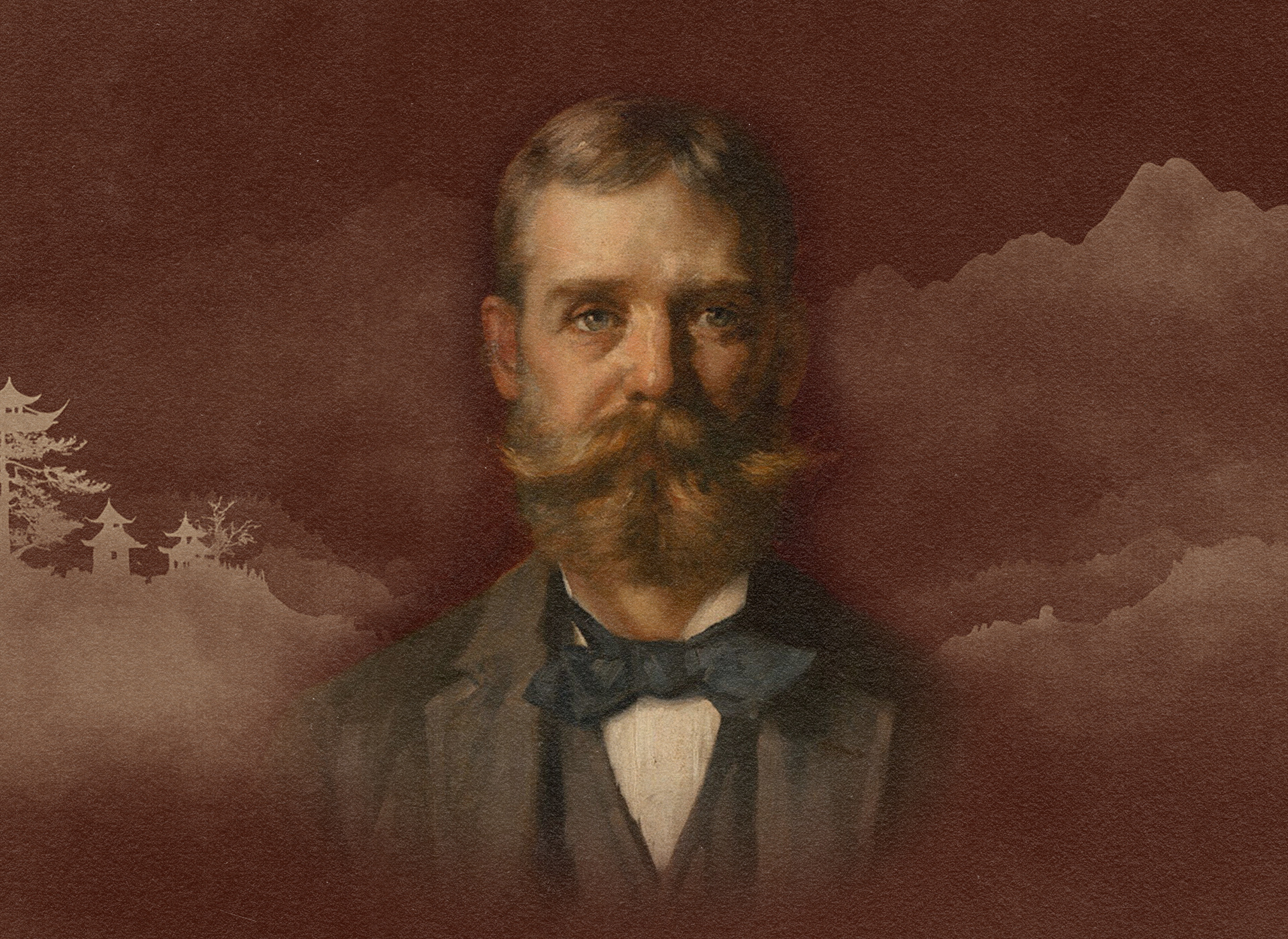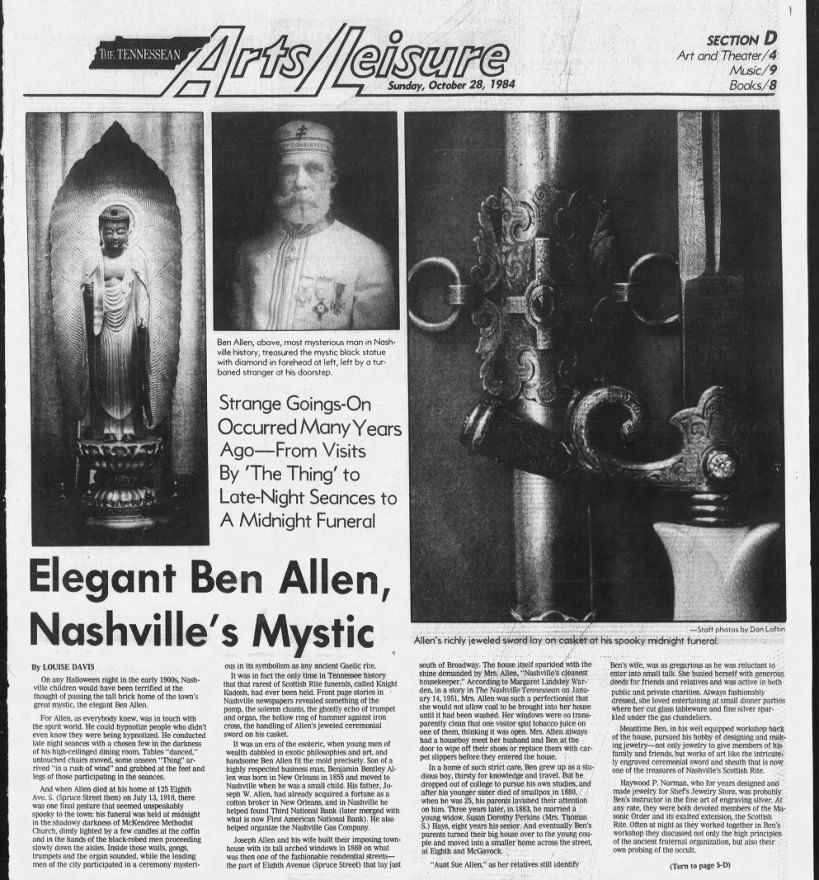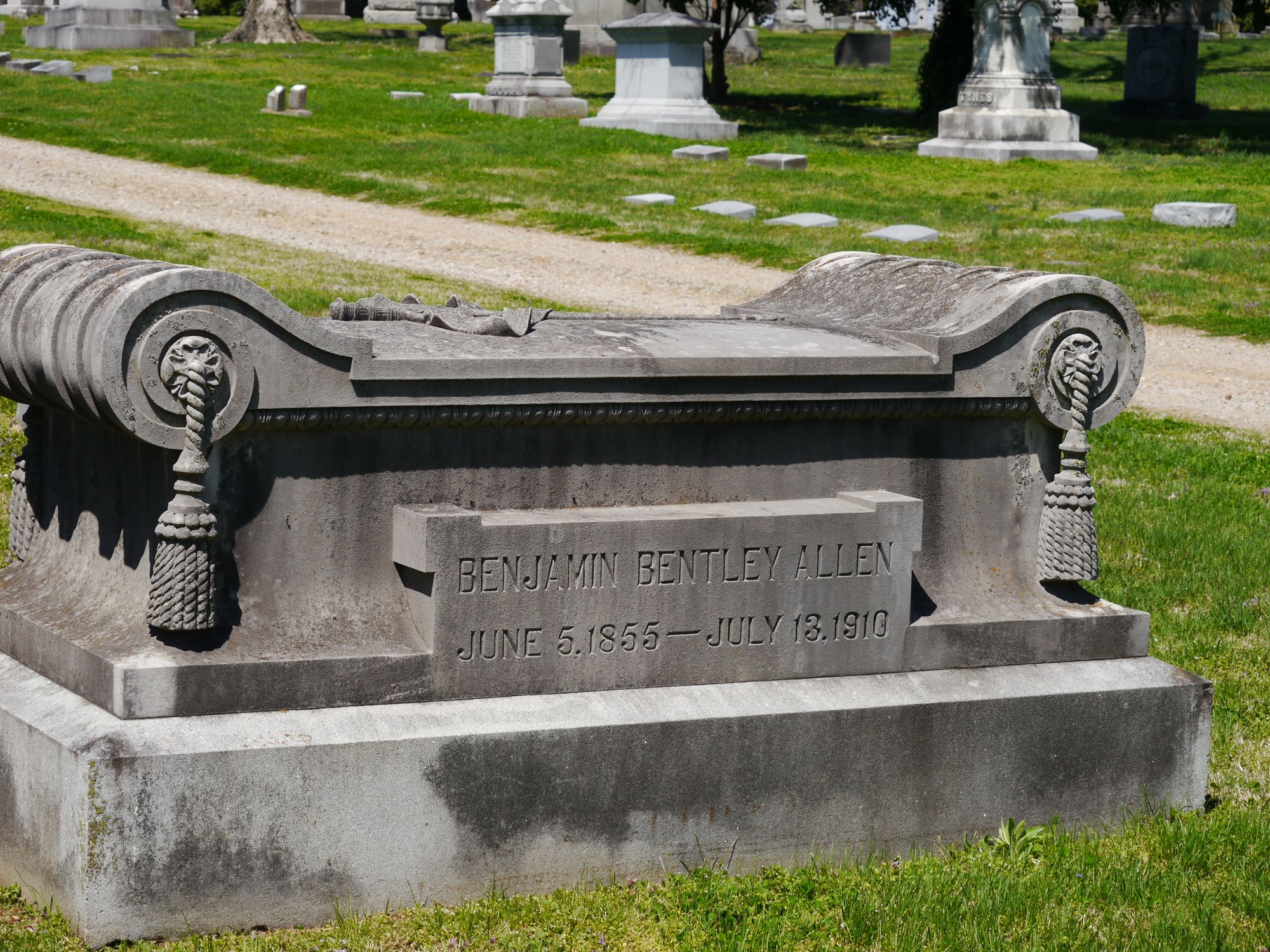
Nashville's Most Mysterious Man
The story of Ben Allen, a Buddha statue, and a mysterious creature called The Thing
The late 19th century was an exciting time for culture in America. Cleopatra’s Needle landed in NYC, oriental philosophy was arriving in the English language, and the telephone was rapidly revolutionizing communication. There was one man in Nashville who seemed to fully embody the curiosity that was fueling this eccentric melange. He was known for his extravagant personal library, potent psychic abilities, and piercing blue eyes. His name was Benjamin Bentley Allen, heir to the First National Bank fortune, and Nashville’s very own mystic.
“Ben Allen looked what he was, a well bred, artistic gentleman of leisure,” a 1951 profile in The Tennessean read. “His searching eyes were bright blue and his thick hair and carefully combed beard were tawny gold in his younger days and nearly white by the time he was 50. Benjamin Bently Allen became such a legend while living that fiction was mingled with fact.”
“The Home of Mr. Ben B Allen contains so many rare and lovely things that a discrimination is a difficult matter. Mr Allen also possessed one of the finest collections of antique arms in this country,” reads another 1959 profile in the Nashville Banner. Rare oil paintings, firearms, and gemstones were just a few of the curiosities you might come across if you were one of the chosen few permitted entrance into his 8th Avenue home.
A Mysterious Buddha Statue

Of all the countless stories orbiting Ben’s life, that of a mysterious statue takes center stage as the most peculiar. After its strange arrival in Nashville, it became his most prized possession with a special place in his home library and extraordinary tales regarding its powers. It was an ancient, four-foot-tall, wood-carved statue of the Buddha covered in gold, encrusted with gems, and carrying an origin story as mythical as that of the eastern deity it depicts.
No less than four versions of how Ben acquired this statue have been told in various newspapers, the first of which show up in 1905, five years before Ben’s odd death, and the most recent being 1984. I will aggregate the opinions and deliver a simplified version of these stories leaving you, the reader, to decide what is fact and what is fiction.
Around the year 1900, Allen attended the performance of a medium at the Nashville Masonic Theatre on Church Street. This may have been The Eva Fay Show in 1900, which he was noted by The Tennessean as attending. It is said that at some point that night, a man approached Ben who told him that he had been sent from the East carrying the statue (Tibet and Turkey are both mentioned as areas of origin). The stranger claimed that his spiritual master had instructed him to carry the statue until he came across the man who was destined to receive it. The identity of this man was not told to him, only that he would know instantly when he saw him.
Apparently, Ben Allen was that man, and the zealous courier offered up the statue to him that evening at the theatre. Ben initially refused to accept the priceless item and went home empty handed. But one article reports that the next morning the statue was left on Ben’s front porch by a turbaned man. It was described as between three and four feet tall and enshrined in a golden lotus flower with an uncut diamond embedded in its forehead.
The most peculiar claim was the existence of three ancient manuscripts in the hollow body of the statue. Allen was able to get some help translating the documents from two gentlemen at Vanderbilt University who were quite familiar with the Orient. Two of the manuscripts were reportedly the correspondences from an ancient Chinese Emperor, announcing that he was sending a golden statue of the Buddha to the monks of a monastery in the mountains. The third was written in an unknown language indecipherable to those who studied it.
“An Eccentric Socialite and Esthete”
Occurrences of disembodied astral visitors in Allen’s home library, unexplainable sounds coming from the Buddha statue, and visionary experiences induced by staring into the diamond were all reported by those who sat in its presence. While the origin of this statue may be shrouded in mystery, its existence is certain, and it is currently in the possession of The Scottish Rite, a philosophical organization of which Ben was a zealous member.
“Select friends knew Ben Allen as a devotee of the Scottish Rite, an artist-craftsman, thoughtful reader, sportsman, and cultured gentleman, but to Nashville in general he was an eccentric socialite and esthete, ” an article notes in 1951. Allen was known for spending sleepless nights in his workshop entertaining himself with silversmithing, jewelry making, and other crafts. What was described in 1905 as an “uncut diamond” in the forehead of the Buddha statue is now a cleanly cut diamond, leading the reader to speculate that Ben himself may have taken the liberty of adding his own artistic touch to the ancient effigy.
The weekly seances held at the Allen’s home were said to be one of the most coveted social events in Nashville to be invited to. “More people wanted to get inside those old red brick walls than into any house in Nashville,” wrote The Tennessean in 1951. Attendees gathered around the dining room table in nervous anticipation. The wind would swirl and lights would flicker as boots became unbuttoned, legs touched, china rattled, and unexplainable noises announced the arrival of what they called The Thing.
Allen was also known to be a skilled hypnotist. It was even said that he could put surgical patients, unable to receive normal anesthetics, to sleep. When asked to explain his skill in the supernatural, he would simply say that it was a natural force just like electricity that one could learn to use. On more than one occasion Haywood Norman, one of Ben’s close friends, would awaken in the night to dreams of Ben calling him for assistance in his workshop. When Norman would walk over to Ben’s home, Ben would be in his shop expecting him.
Ancient Midnight Funeral Rites
Ben’s health declined severely after the death of his close friend and fellow Mason H.C Henley, suffering from what his death certificate would describe as “melancholia”. At the age of 55, Ben’s mind left him in a delirium for 18 days, which some speculated as having arisen by the “contemplating of too many deep mysteries”. Brain Fever is what they called it, and he finally succumbed to it in 1910.
Ben’s funeral service would carry the same gravitas as his life. At the stroke of midnight, on Thursday, July 14th, 1910, a Knights Kadosh Scottish Rite Funeral Service was conducted at McKendree Methodist Church on Church Street.
Hundreds of Masons gathered in procession accompanied by solemn music. Joseph Toy Howell presided over the ceremony which lasted an hour, consisting of ancient Templar burial rites. “The city’s mystics agreed that there had never been anything in the state’s history to match the ceremony - or anyone to match Ben Allen” wrote the The Tennessean in 1984. Ben lies buried in Mt. Olivet Cemetery off of Lebanon Pike in an ornate sarcophagus with a ceremonial sword displayed on its lid.

